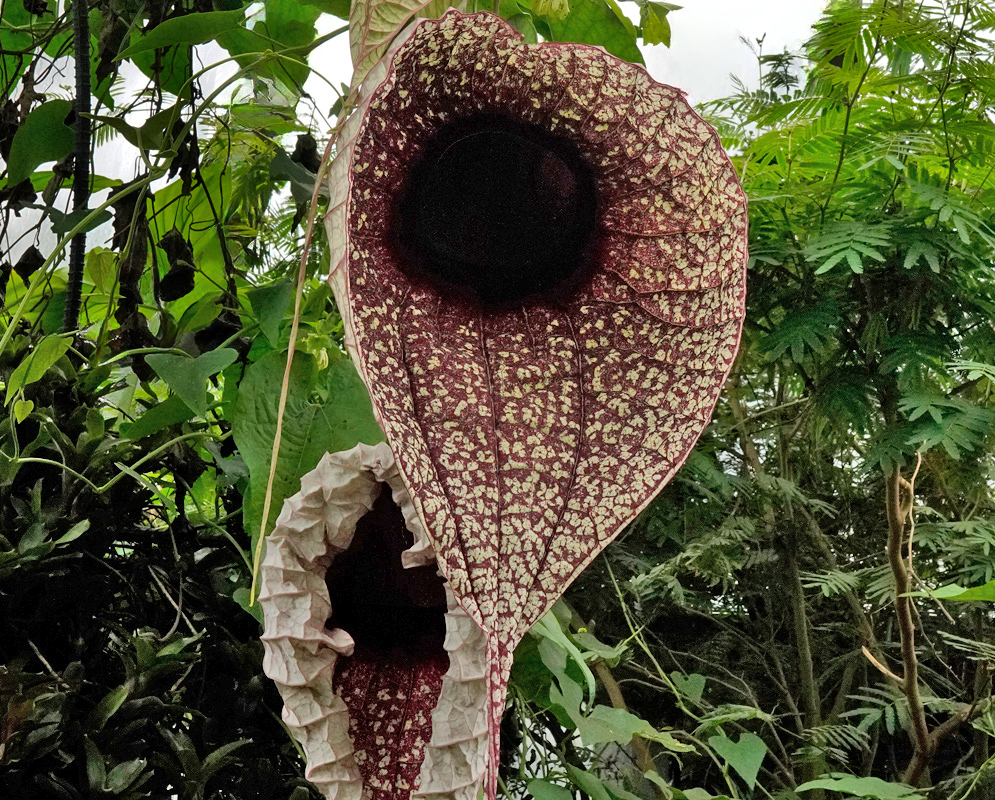This post has 11 Simple Fields-fields attached. Show fields.

Native to the Greater Antilles, Lesser Antilles, and Central America, Aristolochia grandiflora is a fast, twining vine grown in warm regions, commonly called pelican flower or Dutchman’s pipe. Stems scramble over supports and forest edges, bearing single, flat flowers that can exceed 24–30 inches across. Each bloom is a strongly veined, heart-shaped limb patterned in mottled purplish brown and cream with a nearly black, funnel-like throat; the limb connects to an inflated tube that dangles like a pouch. The display is brief—often just a day or two—but plants produce successive flowers through the warm season. The flower functions as a temporary trap for fly pollinators. At anthesis it releases a carrion-like odor and presents downward-pointing hairs that guide small saprophilous flies into the tube; once inside, the hairs prevent escape while pollen is shed onto the visitors. As the flower ages the hairs relax, releasing dusted flies that transfer pollen to younger blooms. Fruits are six-valved capsules that split when mature to drop many flat seeds. Larvae of swallowtail butterflies such as Battus polydamas feed on the foliage; they sequester aristolochic acids from the plant, which deters predators and links the species to butterfly garden plantings in the Neotropics. Ornamentally it is used to cover pergolas and trellises where ample room is available; flowers are typically 10–14 inches long with the limb often over 18 inches wide. Photographed in Colombia.

